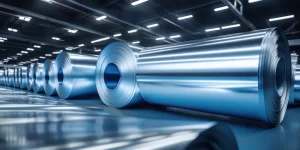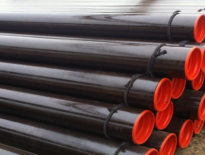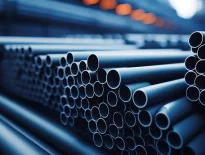Alloy Steel Properties and Types
Alloy Steel is widely used across many industries, with each application requiring specific mechanical properties. Some industries need metals that are highly machinable and ductile, while others need materials that are hard and corrosion-resistant. To meet these varied demands, metals are often modified to exhibit specific properties.
While steel, aluminum, brass, copper, and nickel are commonly used metals, their properties can be further enhanced by mixing them with other elements to create alloys. This process allows for the customization of metals to fit specific needs.
Since steel is one of the most commonly used metals, understanding what alloy steel is is crucial. An alloy steel is simply steel that has been mixed with other elements to improve its properties. These additional elements can boost strength, durability, corrosion resistance, and other characteristics, depending on the requirements.
Common steel alloys include types with added elements like chromium, molybdenum, and nickel, which enhance their performance in different conditions. For example, alloy steel properties can range from improved hardness and wear resistance to enhanced toughness and flexibility.
Knowing what type of alloy is steel and the elements that can be added helps industries choose the right material for various applications, ensuring optimal performance and longevity.
What Is Alloy Steel?
Alloy steel is a type of metal made by combining steel with other elements like chromium, nickel, or molybdenum. An alloy is simply a mixture of two or more elements, where at least one is a metal, like when metals are mixed with non-metals such as carbon or phosphorus. This blending enhances the metal’s properties, offering advantages like better corrosion resistance, higher strength, or greater hardness.
an alloy Steel of iron and carbon. Although carbon steel is technically an alloy, it’s usually categorized separately because it contains mostly iron with a small percentage of carbon as the key element. As the carbon content in the steel increases, the steel becomes stronger, harder, and more resistant to wear, but it also becomes less weldable, ductile, and machinable.
Carbon steel is classified into low-carbon, medium-carbon, and high-carbon types based on its carbon content, which generally doesn’t exceed 2%. Anything beyond that would turn the material into cast iron.
When additional alloying elements like chromium or nickel are mixed into carbon steel, they produce steel alloys with new or enhanced mechanical properties, making them suitable for a wide range of industrial uses.

Characteristics of Common Alloy Elements
Common elements added to steel alloys help tailor the material’s properties for specific uses. Here are some of the most common alloying elements and their effects:
Manganese: Adding small amounts of sulfur and phosphorus along with manganese makes steel less brittle and easier to shape.
Chromium: A low amount (0.5% to 2%) increases the hardness of steel. Higher amounts (4% to 18%) give it excellent corrosion resistance.
Vanadium: Even 0.15% of vanadium can significantly boost strength, heat resistance, and improve the overall grain structure. Combined with chromium, it enhances hardness while maintaining formability.
Nickel: Adding up to 5% increases steel’s strength, and at levels above 12%, it provides excellent corrosion resistance.
Tungsten: Improves heat resistance, raising the steel’s melting point and strengthening its overall structure.
These elements allow manufacturers to create specific steel alloys with the desired mechanical properties for a wide range of industrial applications.
Types of Alloy Steel
Alloy steel is made by blending steel with various elements to enhance its properties. It is categorized into two main types based on the percentage of alloying elements, ranging from 1% to 50%.
- High-Alloy Steel: This type has a higher concentration of alloying elements, often over 12% chromium, making it primarily stainless steel. Chromium forms a thin protective oxide layer that prevents corrosion, making high-alloy steel ideal for long-term durability in applications like cars and industrial machinery. However, it tends to be more expensive due to its enhanced properties.
- Low-Alloy Steel: Containing 1% to 5% of alloying elements, low-alloy steel offers various strengths depending on the specific alloy used. It is often applied in projects requiring strong mechanical properties, such as studding outlets, seamless rolled rings, and large flanges. Its versatility makes it suitable for many industries, offering a balance between performance and cost.
Alloy Steel Properties
| Element | Symbol | wt. % | Function |
| Aluminium | Al | 0.95–1.30 | Alloying element in nitriding steels |
| Bismuth | Bi | – | Improves machinability |
| Boron | B | 0.001–0.003 | Improves hardenability |
| Chromium | Cr | 0.5–2.0 | Improves hardenability |
| 4–18 | Corrosion resistance | ||
| Copper | Cu | 0.1–0.4 | Corrosion resistance |
| Lead | Pb | – | Improves machinability |
| Manganese | Mn | 0.25–0.40 | Prevents brittleness in combination with sulfur |
| >1 | Increase hardenability | ||
| Molybdenum | Mo | 0.2–0.5 | Inhibits grain growth |
| Nickel | Ni | 2–5 12–20 | Increases toughness Improves corrosion resistance |
| Silicon | Si | 0.2–0.7 | Increases strength and hardenability |
| 2 | Increases yield strength(spring steel) |
||
| Higher % |
Increases magnetic properties |
||
| Sulfur | S | 0.08–0.15 | Improves machinability (free-machining steel properties) |
| Titanium | Ti | – | Reduces martensitic hardness in Cr steels |
| Tungsten | W | – | Increases hardness at high temperatures |
| Vanadium | V | 0.15 | Increases strength while maintaining ductility, promotes fine grain structure |
Advantages and applications of alloy steel in construction
Alloy steel offers several key advantages over other types of steel, including:
- Excellent corrosion resistance: It can withstand harsh environments, reducing the need for frequent repairs or replacements.
- High load-bearing capacity: Alloy steel is strong and durable, making it ideal for structures that need to support heavy loads.
- High melting temperature: This allows it to maintain its strength even at high temperatures.
Thanks to these benefits, alloy steel is widely used in various industries, such as:
- Construction projects: It is often chosen for building strong, long-lasting structures.
- Machinery and automotive components: Its strength and durability make it suitable for manufacturing parts like engines and heavy equipment.
- Shaft production: Alloy steel is used to create items like motor shafts and forged rolls.
- Gear manufacturing: Its toughness and wear resistance make it perfect for producing gears.
Conclusion
Alloy steel is a mix of steel with other elements for improved strength and resistance. It has two types: high-alloy (greater corrosion resistance) and low-alloy (versatile and strong), used in construction, machinery, and automotive industries.
FAQ
What is alloy steel?
Alloy steel is a type of steel that contains a variety of alloying elements like molybdenum, manganese, nickel, chromium, vanadium, silicon, and boron. These elements enhance the steel’s strength, hardness, toughness, and wear resistance. The proportion of alloying elements typically ranges from 1% to 50%.
What grade is alloy steel?
Alloy steel grades include 4130, 4140, 4340, and 8620. For example, 4130 is a low-alloy steel widely used in the aerospace industry, while 4140 is a chromium-molybdenum steel commonly used in large equipment like cranes, gears, and turbines.


